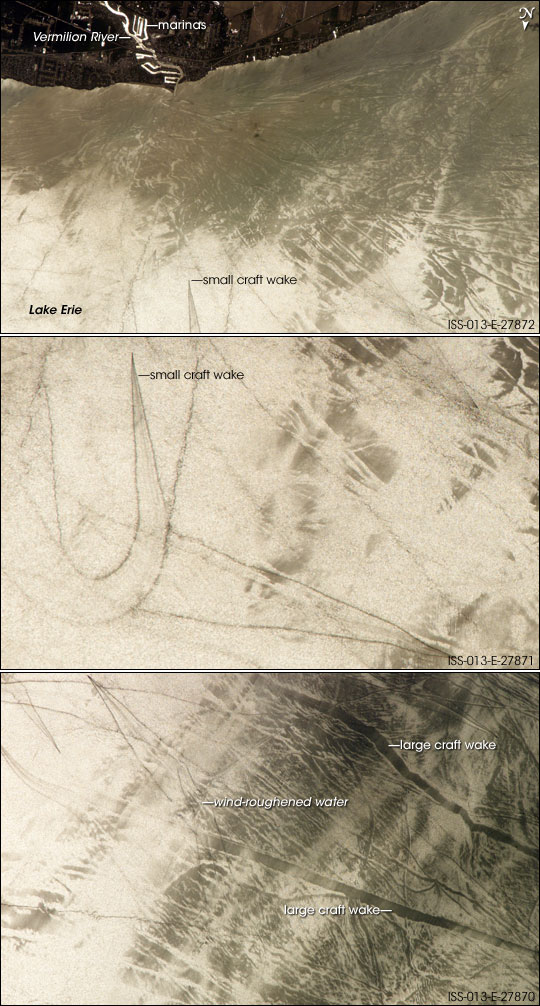


Three detailed south-looking images, taken one second apart near noon on May 28th, 2006, show features on the surface of Lake Erie, about 50 kilometers (30 miles) west of Cleveland, Ohio. The three images overlap slightly and are aligned similarly with south at image top. The top image shows the Vermilion River in strong sunglint (top left). Sunglint results when the Sun’s light bounces off the water’s surface and into the satellite sensor or camera. The angular water bodies along the river are likely marinas. The main part of the image shows numerous ship wakes in the zone of partial glint around the disk of the Sun’s reflection point. The wakes radiate from the mouth of the Vermilion River, with many of them heading northwest (towards the lower-right corner) in the direction of Detroit, Michigan.
On the left side of the second image, a thin, V-shaped wake curves back towards the shore (and appears near the lower left in the top image). This type of wake is typically created by a small, light craft such as a speedboat or sailboat under power. The third image shows similar tight-V-shaped wakes of other small craft. It also shows broad patterns of larger craft, probably large freighters carrying cargo, that displace and disturb more water during passage. These larger wakes are aligned with the direct course between Detroit (out of the image at lower right) and Cleveland (out of the image at top left). Some of the broad, ill-defined swaths of light and dark (aligned from lower left to upper right) are streaks of wind-roughened water, which reflect the Sun differently.
Astronaut photographs ISS013-E-27870, 27871, and 27872 were acquired May 28, 2006, with a Kodak 760C digital camera using an 800 mm lens. They are provided by the ISS Crew Earth Observations experiment and the Image Science & Analysis Group, Johnson Space Center. The images in this article have been cropped and enhanced to improve contrast. The International Space Station Program supports the laboratory to help astronauts take pictures of Earth that will be of the greatest value to scientists and the public, and to make those images freely available on the Internet. Additional images taken by astronauts and cosmonauts can be viewed at the NASA/JSC Gateway to Astronaut Photography of Earth.